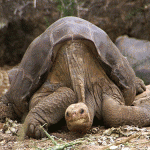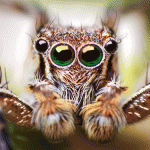The idea of bringing back extinct flora and fauna is not new, but the challenge is two-fold: first in sequencing a full genome from recovered DNA fragments, and then in taking stem cells from a living species with similar DNA, and turning them into cells of the extinct organism – or the closest approximation possible.
The gene editing expertise for the latter process was developed by a professor of genetics at Harvard Medical School who went on to found US biotechnology ‘de-extinction’ company Collosal, which is working on the resurrection of a woolly mammoth and, in collaboration with the University of Melbourne, on a project to bring back the thylacine, or Tasmanian tiger, the last known of which died in a Hobart zoo in 1936. [The video above is recolorised and remastered footage from 1933. For the full story, visit the National Film and Sound Archives.]
Both projects face huge hurdles. A mammoth embryo would face a long gestation period in a surrogate mother, most likely an elephant. The thylacine might find a surrogate in a far smaller marsupial (the fat-tailed dunnart is the leading candidate, having closely-related DNA) with a much shorter gestation period, but its genome is far longer than the mammoth, making the initial stages of the process far more complex.
There are scientific and ethical dilemmas facing this new frontier, and a Museums Victoria Research Institute ‘Future Forums’ event on October 6 will discuss these, as well as genetic conservation efforts for near-extinct mammals such as the smoky mouse, or ‘Konoom’ in Wadawurrung dialect.
Once widespread but now reduced to fragmented populations, and greatly affected by the fires of 2019-2020, the smoky mouse is the subject of genetic studies by DNA Zoo Australia which will support ongoing conservation efforts for the species.
 There may be as few as 2500 smoky mice (Pseudomys fumeus) left in the wild. Genetic studies are supporting efforts to save the species from extinction. Image: Museums Victoria. Location: Australia, Victoria, Grampians National Park 2012
There may be as few as 2500 smoky mice (Pseudomys fumeus) left in the wild. Genetic studies are supporting efforts to save the species from extinction. Image: Museums Victoria. Location: Australia, Victoria, Grampians National Park 2012






